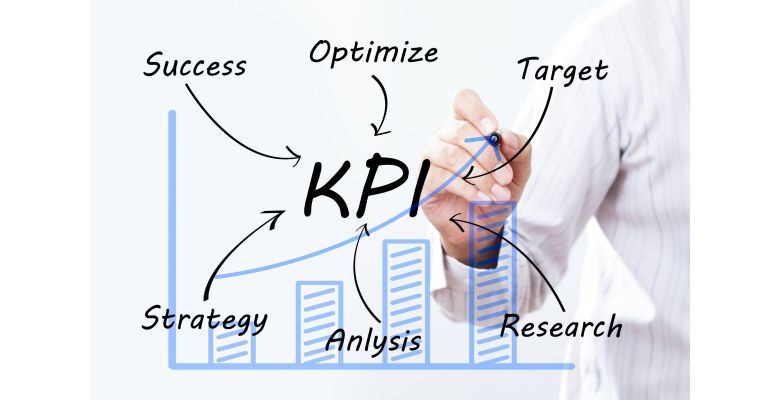If you manage an online store or are active on marketplaces, you can collect a lot of data thanks to tracking and analysis tools. Here we present key figures that you should definitely know and use in online retail in order to measure your progress and success.
Why is this important? Klaus Zumwinkel, former managing director and CEO of Deutsche Post, once said: "Excellent management can only be achieved if you constantly measure results." This means that you can only take targeted action if you have your key figures under control - otherwise you are acting blindly and on instinct.
Good to know: Are "key figure" and "KPI" the same thing?
Not necessarily.
Key indicators serve to make things measurable and clearer. For example, if you know how many visitors your online store has per month, you can derive an assessment, an opinion and also measures from this. A key performance indicator (KPI for short) is a special key figure. It indicates the extent to which you have already met a certain target. Or a key performance indicator is extremely important for your company or for a particular project, so it becomes a KPI.
As you can see: Although there are differences between key figure and key performance indicator or KPI, the two terms are generally used interchangeably - even if this is often not entirely correct. Regardless of whether it is a KPI or "just" a key figure: in the following sections, we explain which essential metrics you should always keep an eye on as an online retailer.
Conversion Rate
Ads on Facebook/Instagram and banner ads on websites are typical advertising measures in e-commerce. If a banner ad has 10,000 impressions per week and 100 people click on it - is that good or bad? To answer this question, you need to calculate the conversion rate (CR). To do this, use this simple formula:
Conversions / impressions * 100 = CR
In this case, this means: 100 / 10,000 * 100 = 1 %. This means that only one percent of the people who saw the ad banner clicked on it.
Bounce Rate
You may attract potential customers to your online store with advertising measures, but only a few starts to browse and many of themleave after the first page.
You ask yourself: What is the balance between visitors who leave immediately and those who stay to browse? This is shown by the bounce rate (BR). The formula for the bounce rate is
(Visitors who leave immediately) / (All visitors) * 100 = Bounce Rate
Example: 2,000 visitors land on your online store as a result of a promotion and 500 do not look at any subpages. The bounce rate for this is
(500 / 2.000) * 100 = 25 %
Good to know: The lower the bounce rate, the better. This is because a high bounce rate shows that many visitors quickly leave your online store again - for example, because they don't like the offer or the usability is poor.
Customer Acquisition Costs
If you want to know how efficient you are with your marketing and sales expenditure, you can use the Customer Acquisition Costs (CAC) formula. This allows you to calculate how much each new customer has cost you compared to the expenditure for a campaign.
This calculation is also very simple:
Campaign costs / number of new customers = CAC
Example: You place Facebook ads for EUR 5,000 and demonstrably acquire 125 new customers. The acquisition costs are therefore
5.000 / 125 = 40
You therefore spent 40 euros per new customer.
Customer Lifetime Value
With the CAC formula, you have calculated what it costs to acquire a new customer. This can be very expensive. But this figure is put into perspective when you calculate the CLV. CLV is the short form for Customer Lifetime Value. This refers to the value of a customer relationship from start to finish.
The CLV is calculated as follows:
(average turnover per purchase) * (number of purchases in the period) * (duration of the business relationship) - (costs for customer acquisition & customer care) = CLV
You need a few key indicators to calculate the customer value.
Here is an example: A customer orders goods from your online store for an average of 1,000 euros - usually twice a year. He remains loyal to you for three years until he no longer orders anything. During this period, you have spent 500 euros on individual acquisition and customer care.
Now apply the CLV formula:
(1.000 x 2 x 3) - (500) = 5.500 Euro
The CLV for this customer is EUR 5,500, which means you have recouped the high expenditure very well.
Average Order Value
Nothing is as valuable as a regular customer. You can see how "valuable" a customer is over the course of your customer relationship by looking at the CLV. And with the average order value (AOV), you can see whether the purchasing behavior of the regular customer changes over time.
The AOV can be calculated quite simply:
Total sales / number of orders = AOV
“Total sales" refers to the total turnover that you generate with a customer in a specific period, for example in a financial year.
Example: Mr. Meier orders goods five times in 2024 for a total of 5,000 euros. The AOV therefore looks like this:
5.000 / 5 = 1.000 Euro
Cart Abondon Rate
Unfortunately, not all potential customers make purchases in your online store. Even if they have filled their shopping cart well, there will be abandonments - for example, because the payment systems you offer are not suitable. Use this formula to find out what this cart abandonment rate (CAR) is:
(completed transactions) / (created shopping carts) * 100 = CAR
Example: If 2,000 potential customers fill a shopping cart in your online store, but only 500 of them complete the payment process, you have a cart abandonment rate of 25 percent.
Return Rate
Selling products successfully is one thing. Another is customer satisfaction. This is expressed, among other things, in the return rate. A high return rate can be an indication that your products do not meet the advertised quality.
You can find out the return rate as follows:
(number of returns) / (number of orders) * 100 = return rate
Example: If you ship 1,000 items per month and receive 200 returns, this results in a returns rate of 20 percent.
Which KPI results are good or bad?
Is a return rate of 20 percent good or bad? Is a conversion rate of three percent normal? Are customer acquisition costs of 40 euros okay? Questions like these occupy everyone who deals with key figures and KPIs. As is so often the case, there are no universal answers.
For one thing, the results depend on your industry and your products. In the fashion sector, for example, return rates are very high as customers order many items of clothing to try on. And if you sell high-priced products, double or even triple-digit customer acquisition costs can be normal, while in the low-cost segment they can quickly lead to insolvency.
On the other hand, you also need to define for yourself what counts as success or failure. Always pay attention to changes and relationships. For example, if you can "only" increase the AOV, the average order value, by five percent within three years, this is an immense improvement in your turnover when selling many expensive products.
Summary
Try to collect as many key figures as possible - from the page impressions of your online store to the conversion rate of your advertising banners and the cart abandonment rate of your shopping cart. Then select the most important figures and make them your key performance indicators.
Caution: Always be critical, because not every key figure is suitable as a meaningful KPI! Some managers make the mistake of pursuing so-called vanity metrics. These flatter their own vanity, but have little impact on business success.








